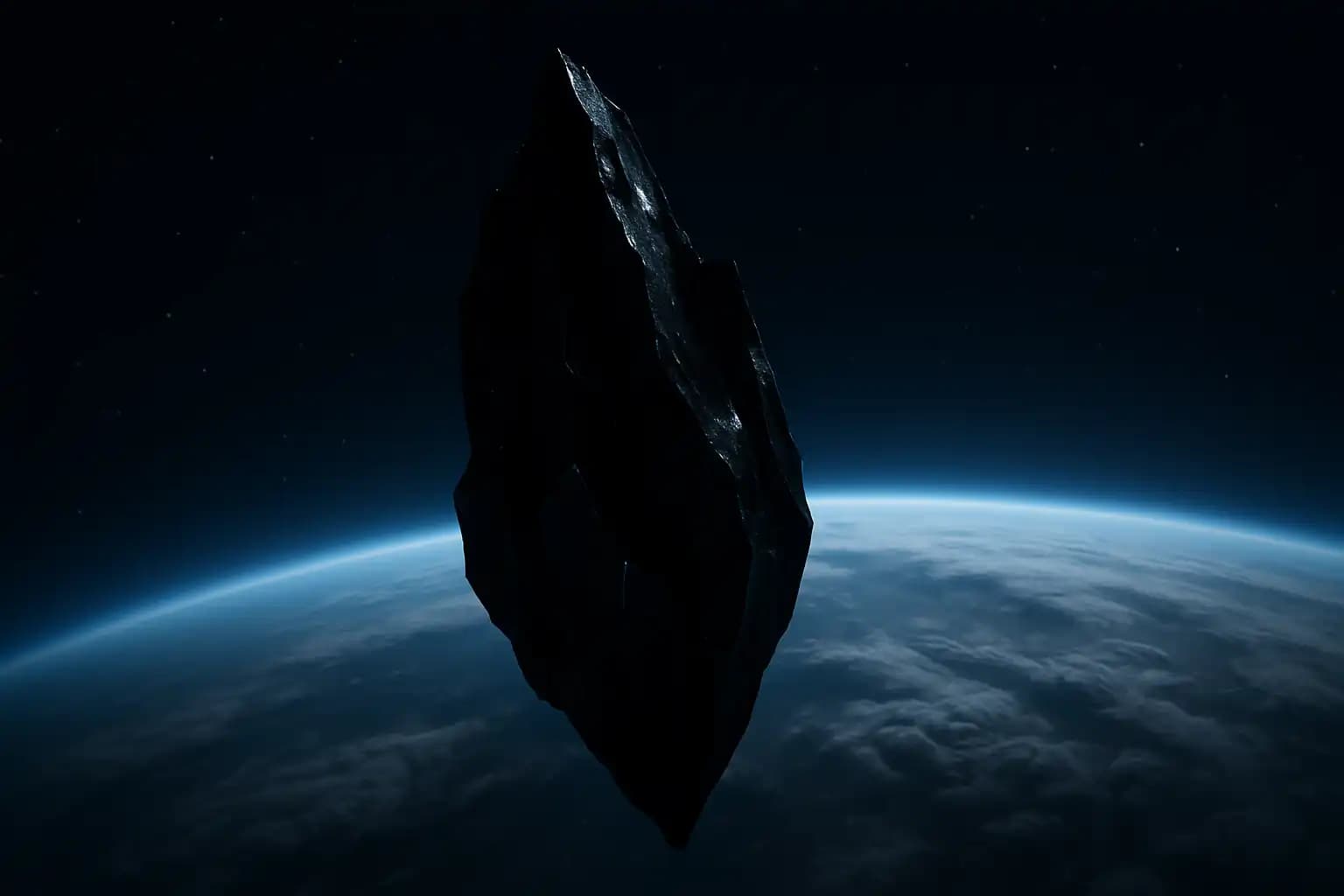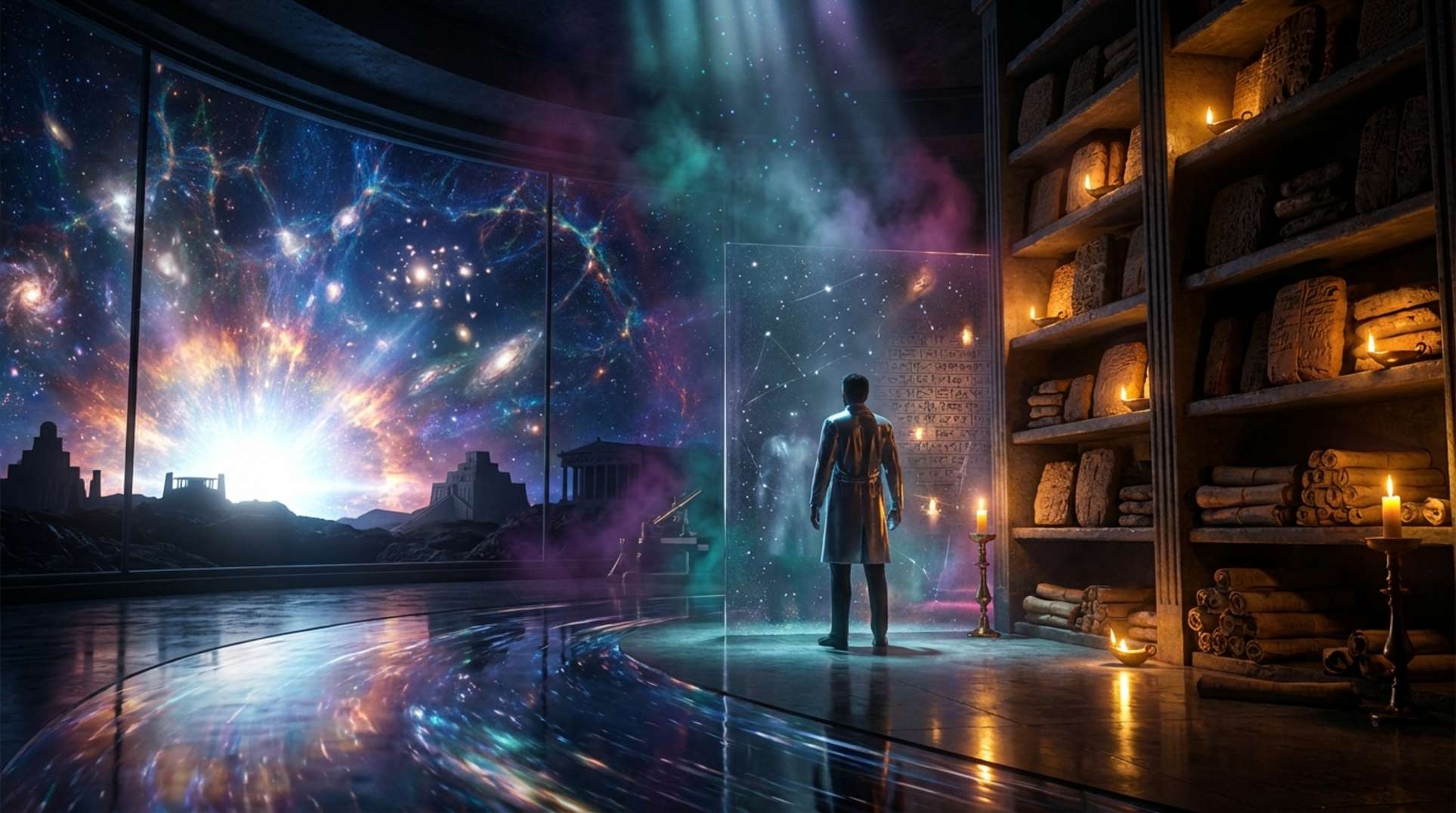On a winter night in 1899, Nikola Tesla paced his Colorado Springs lab, convinced that clicks on his receiver were messages from space. More than a century later, a shard photographed during NASA’s STS-88 mission invited the same cosmic speculation. Between those points stretches the legend of the Black Knight Satellite, an alleged alien probe said to have patrolled near-polar orbit for 13,000 years. The tale fuses Cold War paranoia, misinterpreted data, and an internet age that favors mystery over mundane engineering.
No official catalogue lists such a satellite, yet its footprint lingers in podcasts, Reddit threads, and late-night radio. The story’s durability says less about extraterrestrials than about us—our craving for grand narratives that connect isolated anomalies into elegant conspiracy. To understand why the myth resists debunking, we need to track each breadcrumb: Tesla’s signal, long-delayed echoes, 1950s radar surprises, and that famous shuttle photograph stored at NASA’s Earth-observatory archive. Each fragment behaves like orbital debris of its own, colliding and fusing until the final object appears larger and stranger than its parts.
STS-88 and the Photo That Launched a Thousand Forums
The modern Black Knight craze ignited in late 1998 when astronauts on the first ISS assembly flight snapped a charcoal-colored shape drifting far below. Space historian James Oberg later traced the object to a thermal blanket lost during a spacewalk, yet the photograph’s eerie silhouette proved irresistible. High-definition zooms birthed captions about alien craft, igniting threads that soon knitted the image to rumors archived in this cybersecurity case study on viral misinformation.
The photo’s staying power illustrates how visual evidence trumps technical details. NASA released multiple angles, orbital elements, and EVA transcripts, but none matched the spell of a lone, black shard framed against Earth’s blue limb. The same dynamic fuels geopolitical rumor cycles such as the battlefield snapshots dissected in a recent conflict analysis, proving that an enigmatic image can override context even when the engineering answer sits one click away.
Tesla’s Radio Echoes and the Birth of Cosmic Paranoia
Long before digital filters, Tesla’s reception of repeating pulses ignited speculation that an intelligent beacon orbited our planet. Fringe outlets like this ZeroHedge commentary still cite the incident as early evidence of alien outreach, even though astrophysicists now credit the clicks to natural radio phenomena like pulsars detailed on Wikipedia. The myth, however, thrives on hindsight bias: Tesla’s brilliance imbues the anomaly with significance, making subsequent “confirmations” seem to fulfill his hunch.
During the 1920s, HAM operators documented long-delayed echoes—signals that returned seconds after transmission. At the time, ionospheric science was embryonic, allowing mystery to thrive. Decades later, conspiracy writers wove those echoes into the Black Knight narrative, much as commentators fold solar-storm warnings into doomsday forecasts like the geomagnetic scare explored in this solar-weather report. In both cases, scientific puzzles morph into malevolent portents once perched atop a cosmic perch.
Duncan Lunan’s Star Map and the Power of Pattern-Making
The legend jumped from radio to astronomy in 1973 when Scottish researcher Duncan Lunan claimed that plotting delay intervals from those echoes produced a star map centered on Epsilon Boötis. Popular magazines ran the decoding triumph; only later did Lunan retract, citing methodological errors. Still, the “map” persists, amplified by websites like Greater Ancestors, which present the graphic as proof of a 13,000-year-old envoy.
Cognitive scientists call this apophenia—the mind’s tendency to read significance into randomness. It explains why cloud watchers spot dragons and why pundits link unrelated global tremors in earth-change chronicles. In Lunan’s case, a scatterplot of echo delays became an extraterrestrial treasure map precisely because the human brain abhors chaos.
Cold War Radar and the Birth of the “Mystery Satellite”
The myth’s Cold War chapter began in 1954 when aviation writer Donald Keyhoe told press outlets the U.S. Air Force had detected two rogue satellites—impossible since no nation could yet loft one. Historians later found no corroborating documents; most likely, Keyhoe sought column inches for his UFO book tour. Nevertheless, the claim fit neatly beside spy-satellite anxieties analyzed in this nuclear brinkmanship piece. The era’s fog of secrecy allowed speculative dots to connect unchecked, ensuring that any unidentified radar blip could masquerade as an ancient alien sentinel.
By the 1960s, orbital tracking improved, but so did misinformation. A dark object thought Soviet turned out to be a wayward American Discoverer capsule. Corrections never travel as far as rumors, leaving just enough ambiguity for the Black Knight to slip through NORAD’s catalog into urban legend.
Space Debris, AI-Enhanced Hoaxes, and the Future of the Legend
Today, low-Earth orbit holds more than 25,000 catalogued pieces of junk, a rising hazard detailed in this investigative dispatch. That congestion virtually guarantees fresh “mystery satellite” sightings whenever a tumbling panel crosses a backyard telescope. AI image enhancers further complicate debunking; a blurry IRIDIUM fragment can upscale into a stealthy monolith ready for TikTok virality.
Commercial megaconstellations add layers of reflection and glint, spawning UFO reports that echo past panics catalogued in this chronicle of night-sky alarms. The Black Knight thus evolves with each technological shift: telegraphy birthed it, radar nurtured it, and social algorithms now keep it in perpetual orbit around public imagination.
Why the Black Knight Refuses to Deorbit From Popular Culture
Myth scholar Joseph Campbell argued that societies craft hero journeys to externalize the unknown. The Black Knight acts as a dark mirror, reflecting humanity’s simultaneous hope for cosmic company and fear of surveillance. Unlike Roswell’s grounded crash site, an orbital phantom remains out of reach, immune to excavation yet close enough to glimpse through binoculars—or Photoshop.
Official comment often backfires. Each NASA denial spawns counterclaims of cover-up, akin to the secrecy tug-of-war outlined in this Vatican-document leak report. Transparency helps, but fascination endures because doubt itself entertains. As astrophysicist Carl Sagan noted, “Somewhere, something incredible is waiting to be known.” For many, that something circles overhead in shadow.
So is the Black Knight Satellite real? Technically, no evidence supports a 13-millennia relic. Yet culturally, it’s as tangible as any constellation we invented to map the darkness. Whether alien probe or thermal blanket, it reminds us that the night sky is both a laboratory and a canvas for storytelling. Keep looking up—and if you seek deeper dives into cosmic mysteries and the narratives we weave around them, bookmark Unexplained.co. The next anomaly may prove even harder to dismiss.




